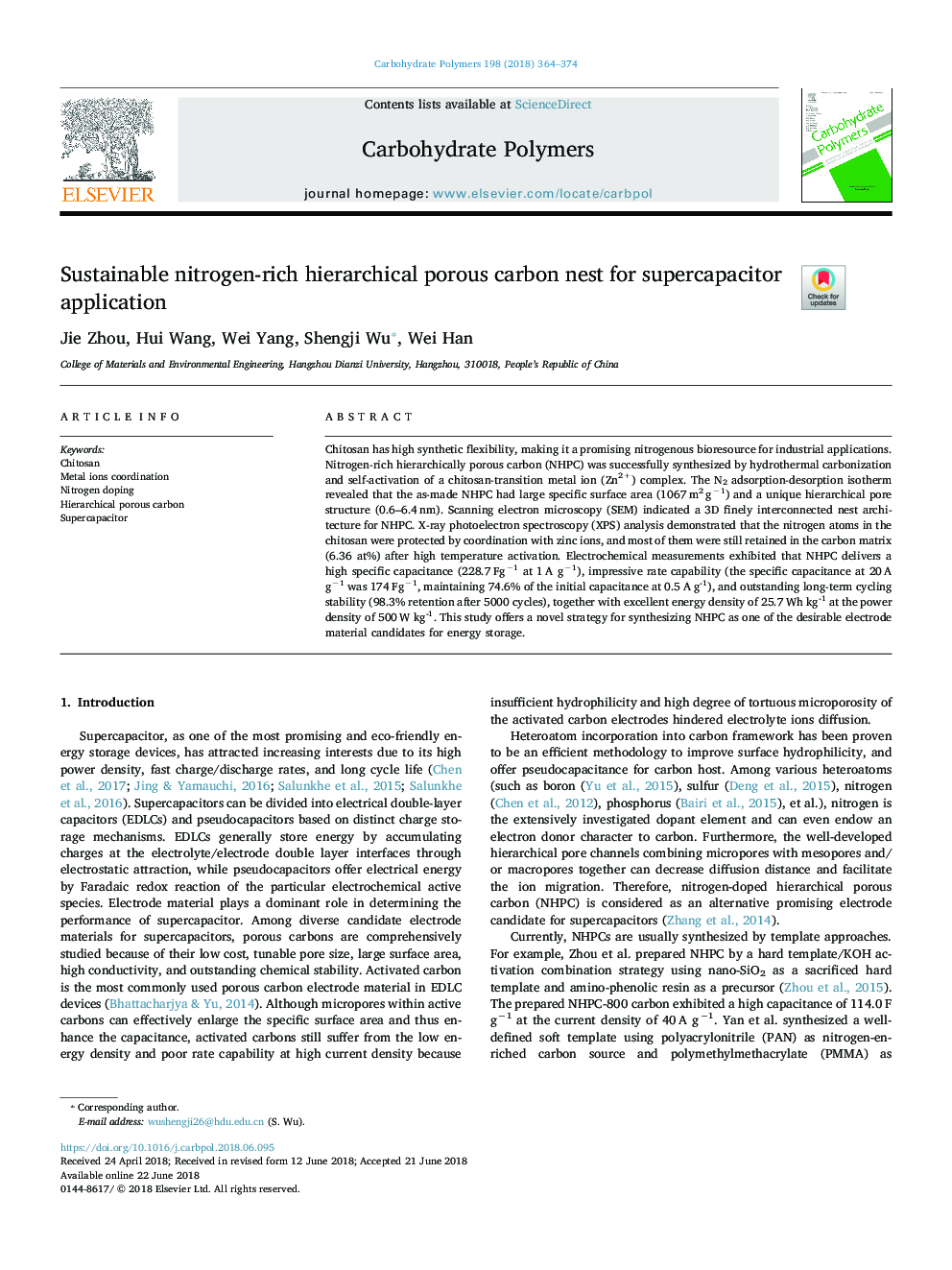| Article ID | Journal | Published Year | Pages | File Type |
|---|---|---|---|---|
| 7781473 | Carbohydrate Polymers | 2018 | 11 Pages |
Abstract
Chitosan has high synthetic flexibility, making it a promising nitrogenous bioresource for industrial applications. Nitrogen-rich hierarchically porous carbon (NHPC) was successfully synthesized by hydrothermal carbonization and self-activation of a chitosan-transition metal ion (Zn2+) complex. The N2 adsorption-desorption isotherm revealed that the as-made NHPC had large specific surface area (1067â¯m2â¯gâ1) and a unique hierarchical pore structure (0.6-6.4â¯nm). Scanning electron microscopy (SEM) indicated a 3D finely interconnected nest architecture for NHPC. X-ray photoelectron spectroscopy (XPS) analysis demonstrated that the nitrogen atoms in the chitosan were protected by coordination with zinc ions, and most of them were still retained in the carbon matrix (6.36 at%) after high temperature activation. Electrochemical measurements exhibited that NHPC delivers a high specific capacitance (228.7â¯Fgâ1 at 1â¯A gâ1), impressive rate capability (the specific capacitance at 20â¯A gâ1 was 174â¯Fgâ1, maintaining 74.6% of the initial capacitance at 0.5â¯A g-1), and outstanding long-term cycling stability (98.3% retention after 5000 cycles), together with excellent energy density of 25.7 Wh kg-1 at the power density of 500â¯W kg-1. This study offers a novel strategy for synthesizing NHPC as one of the desirable electrode material candidates for energy storage.
Related Topics
Physical Sciences and Engineering
Chemistry
Organic Chemistry
Authors
Jie Zhou, Hui Wang, Wei Yang, Shengji Wu, Wei Han,
